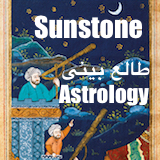Jewish News
When an Iranian ballistic missile tore through the Weizmann Institute of Science in Rehovot, Professor Liran Shlush feared everything he had worked towards for the past five years had been obliterated.
His team’s lab, one of around 45 affected in the 15 June attack, was based in a building that was “badly damaged, but not destroyed,” he said. The other half, he added, was “completely destroyed”.
“We lost around one quarter of what I define as irreplaceable,” Shlush told Jewish News. “But the rest – we were able to rescue.”
His voice was calm, but the reality was anything but. “We came very early after the missile – about an hour later – and saved everything we could,” he said. “Some of the freezers were buried under the ruin, so we couldn’t reach those. But the rest – the samples from patients we’d collected, that were frozen – we managed to recover.”
Among them were vials of material intended for a large-scale, international clinical trial – part of the next phase of a study that may now help revolutionise blood cancer diagnosis.
Just one week after the strike, Nature Medicine published the results of that research: a study showing that rare stem cells which occasionally migrate from bone marrow into the bloodstream can be used to detect myelodysplastic syndrome (MDS), a condition that can progress into acute leukaemia.
Crucially, the test – developed in collaboration with Prof. Amos Tanay and a wider team – could eliminate the need for painful bone marrow biopsies, offering instead a simple blood test with potentially global diagnostic value.
“We show that we can diagnose the disease without the bone marrow,” said Shlush. “Whether it will allow early diagnosis, the future will tell – but for now, we can say, at least for one disease, we can diagnose it without the need for [a biopsy].”
The paper, years in the making, was completed before the attack – but the symbolism of its publication date wasn’t lost on him. “We knew it was accepted before,” he said, “but the date that it was meant to be published became symbolic. It was a very nice day to see it finally out.”
The research itself involved extensive single-cell RNA sequencing – a technique allowing scientists to study individual blood stem cells at the highest level of detail available. “We built something like a blood count,” said Shlush. “But at the stem level – cells that were inaccessible in normal blood tests.”
Rather than simply measure cell numbers, his team analysed the genetic profiles and characteristics of those cells, drawing samples from hundreds of healthy individuals to create a detailed “reference map”. They then compared this to samples from patients with MDS.
The results were compelling – and far-reaching.
“We were able to extract information that no one else was able to do before,” said Shlush. “We studied the ageing of the blood system, discovered novel mechanisms, and found the ability to compare patients to healthy individuals.”
Even among healthy people, they found the number of stem cells varied significantly. “Unless you capture this variability in the healthy population,” he explained, “you cannot define what is unhealthy.”
The team is now preparing the follow-up: an international trial involving hospitals in Japan, Taiwan, Canada, the United States and across Israel. “Those samples were kept frozen,” he said. “We saved the samples of the next clinical trial – and that is heavily built on the results of the first.”
Feedback from the medical community has been swift and enthusiastic. “All over the world, people are thrilled,” he said. “My student presented it at the European Haematology Association meeting. It was selected as the main plenary talk. Physicians are joining us – and patients come to say, ‘I think it will be soon in the clinic.’”
Still, Shlush is careful not to overplay the backdrop to their achievement.
“I must say, the science is so important – and we are so proud of it,” he said.
A physician-scientist by training, Shlush describes the study as a defining moment in his career. “It’s probably one of the highlights in my research career,” he said. “I really want to advance medicine for my patients – and this is a really big step.”
Despite the destruction around him – with nearly half the campus buildings damaged and others, like cardiac biologist Prof. Eldad Tzahor’s lab, completely levelled – he’s determined not to be derailed.
“We will stand up from this stronger and better,” he said. “Buildings will be built. This is a place for science – and I see a good future.”
His hope now is that clinicians around the world will join the effort and help validate the test on a global scale. “I hope this will reach as many people in position as possible,” he said. “So, they will participate in our trials – and this thing will essentially become a common, trusted clinical tool.”










Comments